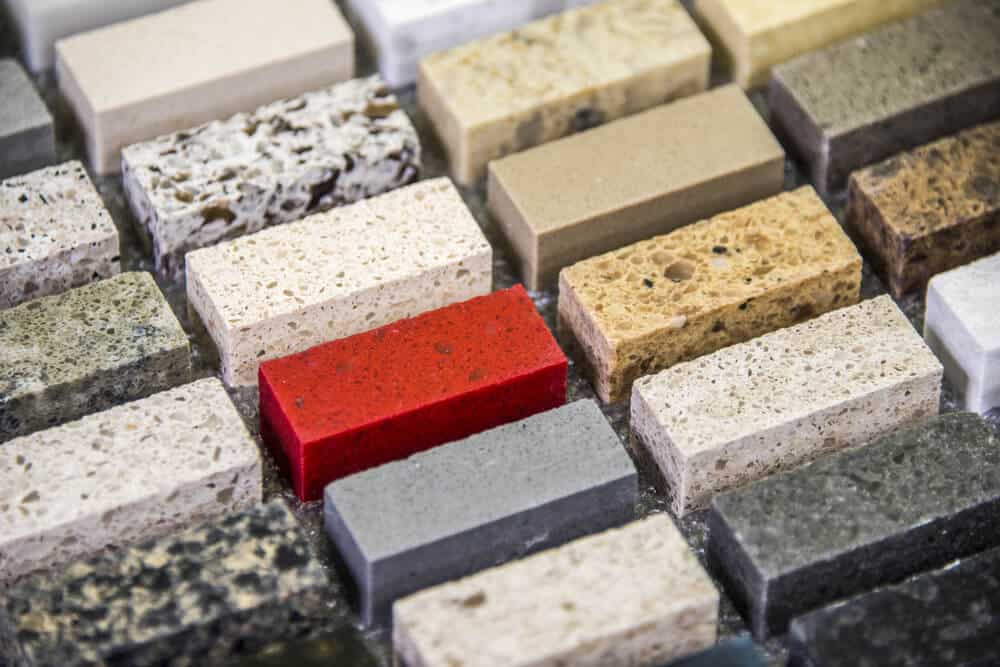
Marble is a metamorphic rock that forms when limestone or dolomite is subjected to high heat and pressure. The resulting stone is hard and durable, with a unique pattern of veins and swirls that make it popular for use in construction and decoration. Marble is often used in flooring, countertops, and other architectural features, and is also prized for its use in sculpture and other works of art. Today, marble is quarried all over the world, with some of the most famous quarries located in Italy, Greece, and the United States.
The ancient Greeks and Romans were renowned for their use of marble in architecture and sculpture. The Parthenon in Athens, Greece, is one of the most famous examples of marble architecture, featuring numerous marble columns and sculptures. The Romans also used marble extensively, with examples including the Pantheon in Rome and the Baths of Caracalla. Marble was often associated with wealth and power, and was used to create elaborate tombs and memorials for the elite of these societies.
The Venus de Milo, also known as the Aphrodite of Milos, is one of the most famous marble sculptures in the world. This ancient Greek statue depicts the goddess of love and beauty, and is notable for its missing arms. The statue was discovered on the island of Milos in 1820, and has since become an icon of classical art. Today, the Venus de Milo is housed in the Louvre Museum in Paris, France.
The Taj Mahal, located in Agra, India, is one of the most famous buildings in the world. This white marble mausoleum was built by the Mughal emperor Shah Jahan in memory of his beloved wife Mumtaz Mahal, who died in childbirth. Construction on the Taj Mahal began in 1632 and was completed in 1653, with over 20,000 workers and artisans involved in the project. Today, the Taj Mahal is a UNESCO World Heritage Site and one of the most visited tourist attractions in India.
The Pantheon in Rome, Italy, is one of the most well-preserved examples of ancient Roman architecture. This temple was originally built in 27 BC, and was later rebuilt in the 2nd century AD. The building features a large rotunda with a massive dome made of concrete and marble, and is decorated with numerous sculptures and inscriptions. Today, the Pantheon is a popular tourist attraction and a symbol of ancient Roman engineering and design.
Michelangelo’s David is one of the most famous sculptures in the world, and was carved from a single block of marble. This masterpiece depicts the biblical hero David, and is notable for its realistic portrayal of the human form. Michelangelo spent over three years working on the sculpture, which was completed in 1504. Today, David is housed in the Accademia Gallery in Florence, Italy, and is considered a symbol of Italian Renaissance art.
The Elgin Marbles are a collection of marble sculptures that were originally part of the Parthenon in Athens, Greece. These sculptures were removed by the British ambassador Lord Elgin in the early 19th century and later acquired by the British Museum in London. The ownership of the Elgin Marbles has been a source of controversy, with Greece and other countries calling for their return to their place of origin. The sculptures are considered some of the finest examples of ancient Greek art.
In ancient Greece, marble was used to create elaborate temples and sculptures, such as the famous Parthenon in Athens. Similarly, the ancient Romans used marble in the construction of public buildings and monuments, including the Colosseum and the Pantheon. The use of marble continued throughout the Renaissance and into the modern era, with many iconic buildings and monuments around the world incorporating the stone into their designs. Today, marble remains a popular choice for architects and builders, and its timeless beauty ensures that it will continue to be used for centuries to come.
The Lincoln Memorial in Washington D.C. is a famous example of the use of marble in American architecture. The monument, built to honor the 16th President of the United States, is made primarily of white marble and features a large statue of Abraham Lincoln seated in contemplation. The interior of the memorial is decorated with marble panels inscribed with some of Lincoln’s most famous speeches, including the Gettysburg Address.
Marble has also been used in the creation of many famous sculptures throughout history, including the Winged Victory of Samothrace, the Laocoön and His Sons, and the Pieta. The Pieta, created by Michelangelo in 1499, is a particularly famous example of the use of marble in sculpture. The work depicts the Virgin Mary holding the body of Jesus after his crucifixion, and is considered one of the greatest masterpieces of Western art.
The Carrara marble quarries in Italy are some of the most famous in the world, and have been in operation for over 2,000 years. The quarries produce a high-quality white marble that is used in some of the most famous buildings and sculptures in history. Carrara marble was used to create many of Michelangelo’s sculptures, as well as the Pantheon and the Trajan’s Column in Rome.
Marble has been used in a variety of religious contexts throughout history. In Hinduism, marble is often used in the creation of statues of deities, such as the marble statue of Lord Shiva at the Elephanta Caves in India. Marble has also been used in the construction of many Christian churches and cathedrals, such as the Basilica di Santa Maria del Fiore in Florence, Italy.
The largest marble building in the world is the Palace of the Parliament in Bucharest, Romania. This massive structure was constructed between 1984 and 1997 and covers an area of over 3.7 million square feet. It is the second-largest administrative building in the world, after the Pentagon, and is made almost entirely of marble. The building was designed to serve as the headquarters for Romania’s communist government but is now the seat of the Romanian Parliament. The Palace of the Parliament is a testament to the power and influence of marble as a building material and stands as a landmark of both Romanian history and modern architecture.
The use of marble in art and architecture declined during the Middle Ages, but experienced a resurgence during the Renaissance. The Renaissance artists and architects prized marble for its beauty and versatility, and used it extensively in the creation of some of the most famous works of art and architecture in history. The Renaissance also saw the development of new techniques for working with marble, such as the use of the toothed chisel and the point chisel.
Marble can come in a variety of colors and patterns, depending on its origin and mineral composition. The most common color of marble is white, but it can also be found in shades of black, gray, pink, green, and red. Some types of marble, such as the Breccia marble found in Italy, have distinctive patterns of swirling veins and colors that make them particularly prized for use in decorative applications.
Marble has also been used in the creation of many famous monuments and memorials throughout history. The Washington Monument in Washington D.C. is one example, featuring a large obelisk made of marble and granite. Other notable examples include the Jefferson Memorial, the Lincoln Memorial, and the Vietnam Veterans Memorial.
Marble is a popular choice for kitchen and bathroom countertops, as it is durable, heat-resistant, and easy to clean. However, marble is also porous and can be easily stained or etched by acidic substances. To maintain the beauty of marble countertops, it is important to clean up spills immediately and use a sealant to protect the surface.
The use of marble in architecture and decoration continues to be popular today, with many contemporary architects and designers incorporating marble into their designs. One notable example is the Oculus, a transportation hub in New York City designed by architect Santiago Calatrava. The hub features a large atrium lined with white marble, and has been described as a “modern cathedral” for its use of marble and natural light.
The largest marble statue in the world is the Spring Temple Buddha, located in the Henan Province of China. The statue stands at an impressive 420 feet tall and weighs over 1,000 tons, making it not only the largest marble statue in the world but also one of the tallest statues in the world. The statue was completed in 2008 and is made of white marble, copper, and steel. Its design is inspired by the Buddhist Maitreya, who is considered to be the future Buddha in Buddhist teachings.
The word “marble” is derived from the Greek word “marmaros,” which means “shining stone.” This is an apt description for the stone, which has a naturally shiny and lustrous appearance when polished.
Marble is a metamorphic rock, meaning it was originally a different type of rock that was transformed by heat and pressure over time. In the case of marble, the original rock was limestone or dolomite, which were altered by geological processes to form the crystalline structure of marble.
Marble is a relatively soft stone compared to other types of stone, such as granite or quartzite. This makes it easier to work with and shape, but also means that it is more prone to scratching or chipping if not handled carefully.
Marble has been used in many cultural traditions as a symbol of wealth, luxury, and power. In ancient Rome, for example, marble was often used in the construction of public buildings and monuments to demonstrate the power and prestige of the ruling class.
In addition to its use in art and architecture, marble has also been used in the creation of jewelry and other decorative objects. Marble is often carved or polished into intricate designs, and is prized for its unique color and pattern.
The use of marble in construction and decoration can have a significant impact on the environment. Quarrying and mining marble can result in habitat destruction, soil erosion, and water pollution. However, some quarries and mines have implemented sustainable practices to minimize their impact on the environment.
Marble has played an important role in human history for thousands of years, and continues to be a beloved and highly valued material today. Its beauty, durability, and versatility make it a popular choice for a wide range of applications, from art and architecture to everyday objects and household surfaces.









